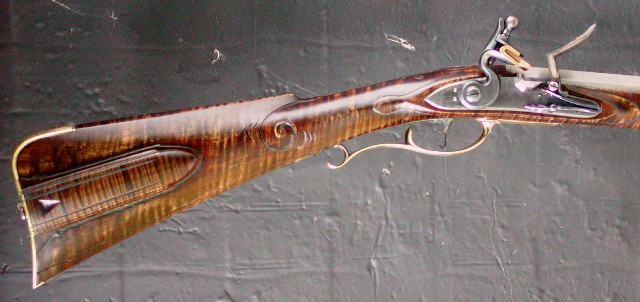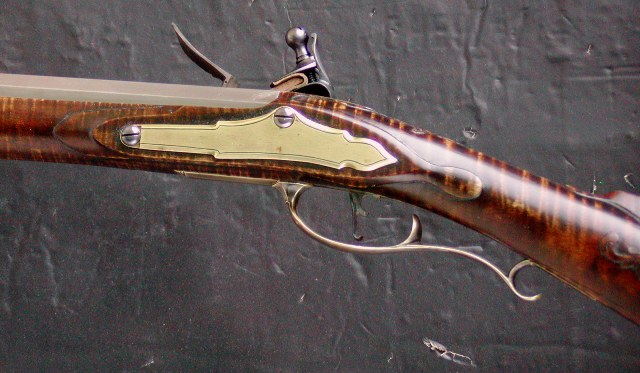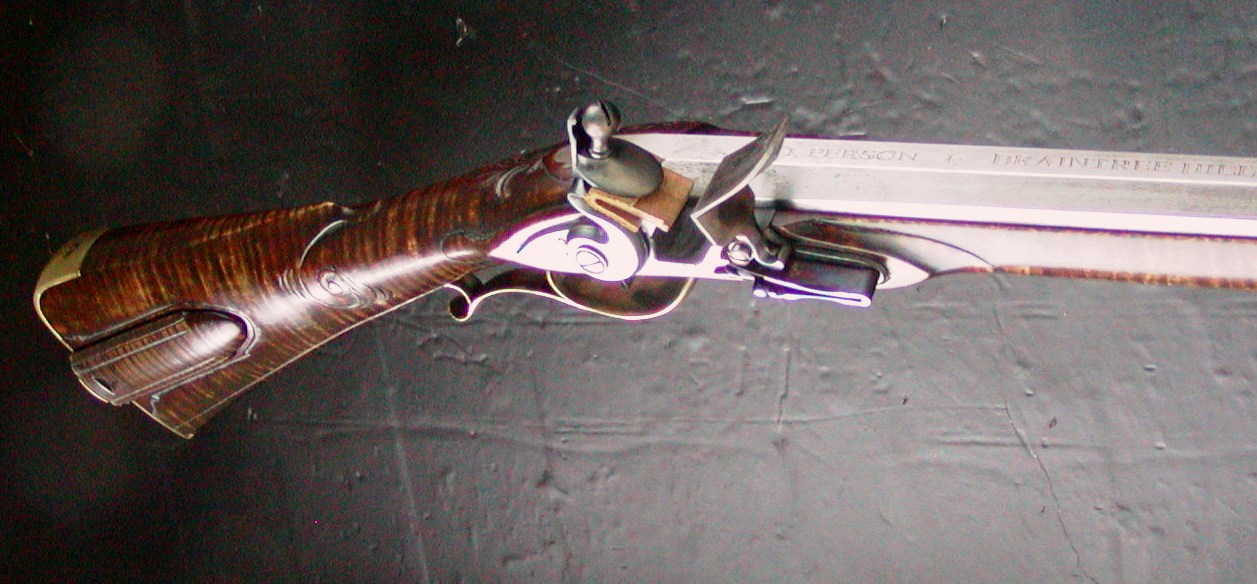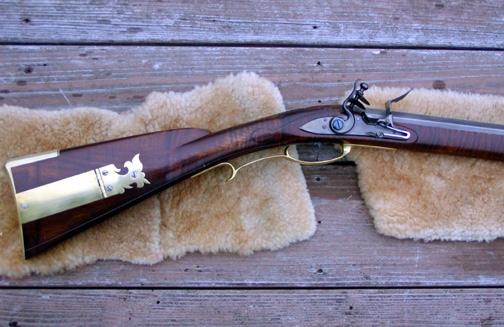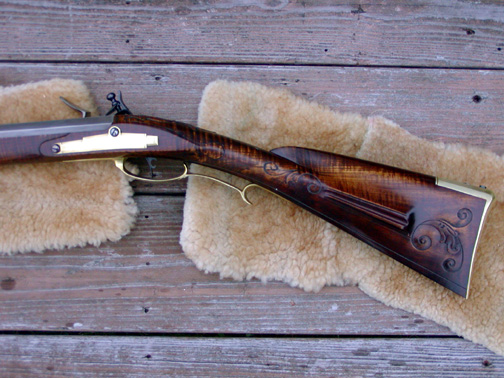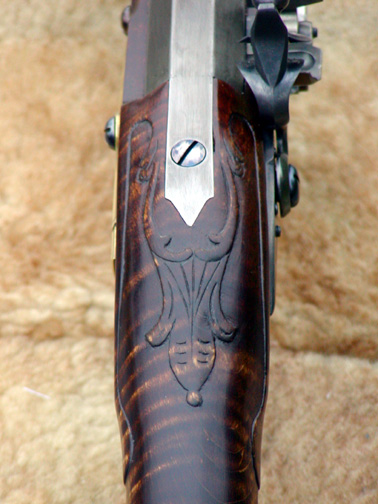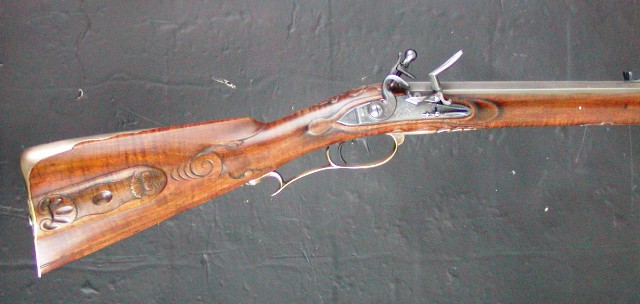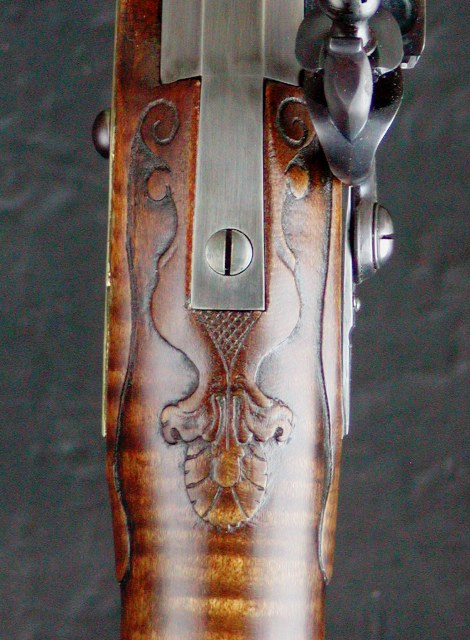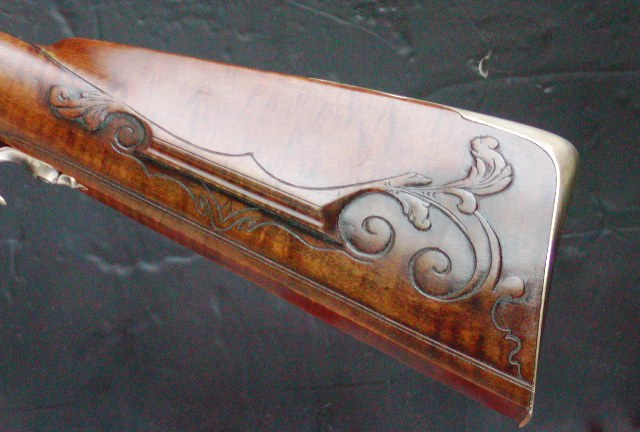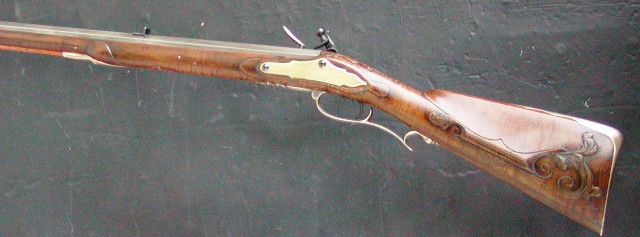Hi DY,
It is unfortunate about the book because the photos are great and the selection of guns is as well. The first rifle I posted above is inspired by the unnamed Christian's Spring rifle shown in the book. The third gun is a copy of the Edward Marshall rifle also shown in the book. Contrary to the book, Marshall probably did not carry any rifle with him during his 62-mile fast walk/run. The path was quietly prepared prior to the event and the whole walking purchase was a scam on the Delaware Indians perpetuated by the sons of William Penn. The book's premise is that Lancaster rifle makers helped win the revolution. An irony not discussed in the book is that in 1775-76 Pennsylvania and the Continental Army were desperate for muskets with bayonets, not rifles. State and army officials pleaded, coerced, threatened, bribed, and ordered the Lancaster gunsmiths to stop making rifles and make muskets. The gunsmiths made promises and signed contracts to do so. They produced none. When inspectors arrived to see how musket production was going, they found the gunsmiths still making rifles and no muskets. The reason: they could make much more money building rifles. Scott Gordon, a professor of history at Lehigh University just published a paper in the Journal of the PA Historical Society describing how PA was so desperate for arms they confiscated them from not only loyalists but also citizens supporting the revolution but who could not serve in the army or would not because of religious reasons. They essentially disarmed the citizens not directly serving in the army.
dave






